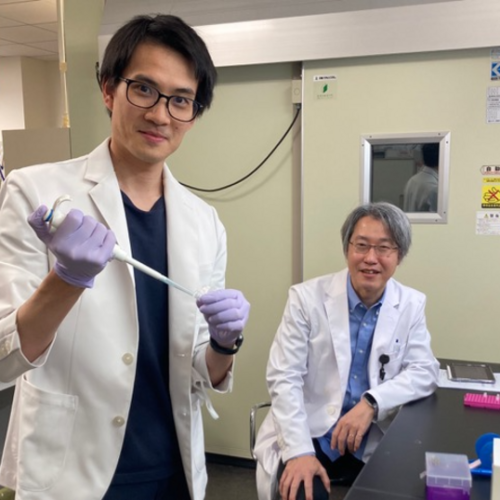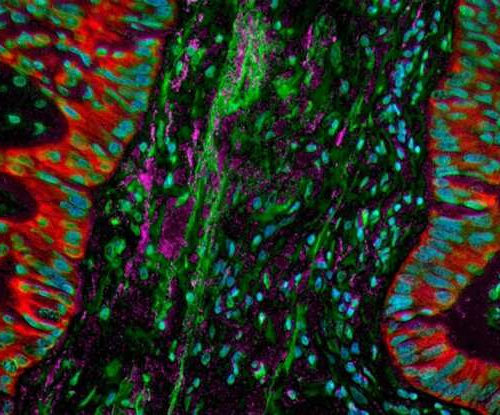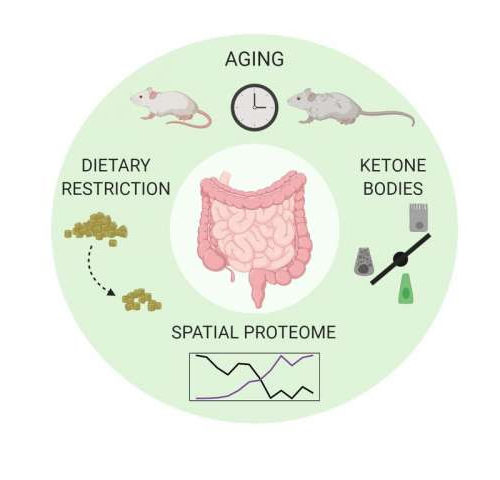Peer-Reviewed Publication CHIBA UNIVERSITY IMAGE: RESEARCHERS USED MURINE AND HUMAN CD4+ T CELL LINES TO STUDY THE INFLUENCE OF METHOTREXATE ON TAP63 EXPRESSION CREDIT: AKIRA SUTO FROM CHIBA UNIVERSITY Rheumatoid arthritis (RA) is an autoimmune disease characterized by joint deterioration. The clinical outcomes of patients with active RA can be improved using anti-rheumatic medications, such...
Tag: <span>proteomics</span>
‘Crosstalk’ between muscle and spleen in Duchenne muscular dystrophy
by University of Bonn The figure shows an overview of the potential protein-protein interaction patterns at reduced (left) and increased (right) protein concentrations in the spleen of Duchenne mice. Credit: Maynooth University Duchenne muscular dystrophy (DMD) is the most common muscle disease in children and is passed on by X-linked recessive inheritance. Characteristic is a...
Lung cancer proteome builds on genetic findings to reveal therapeutic strategies
by Tom Ulrich, Broad Institute of MIT and Harvard Lung cancer is the most commonly diagnosed cancer worldwide and the leading cause of cancer-related deaths, killing more per year than breast, colon, and prostate cancers combined. Over the years, studies of the lung cancer genome have fueled the development of drug therapies that target mutations...
Irresistin: a ‘Poison Arrow’ to Defeat Antibiotic Resistance
By Emily Henderson, B.Sc. What led you to carry out this research? When I (James) started graduate school, I had never worked in bacteria before. I originally worked with Drosophila, but when I joined Zemer’s lab, we basically came to the table with the question, “How can we address the global need for new antibiotics...
Aging and diet lead to proteome changes in the intestinal epithelium
by Fritz Lipmann Institute on the proteome of the intestinal epithelium and leads to age-related impairments in adaptation to nutrient availability. (Source: FLI / Alessandro Ori & Nadja Gebert. Created with BioRender.com) The small intestine is one of the most important interfaces between the environment and our body. It is responsible for nutrient absorption but...
Protein aggregation: Protein assemblies relevant not only for neurodegenerative disease
Publication in Nature Communications HEINRICH-HEINE UNIVERSITY DUESSELDORF Proteins are central components of living material. These complex molecules made up of combinations of individual amino acids in some cases comprise thousands of individual atoms and have sophisticated three dimensional shapes. The term ‘fold’ is used to describe this structure. The fold of a protein determines its biological function. ...
One step closer to chronic pain relief
Posted Today While effective drugs against chronic pain are not just around the corner, researchers from Aarhus University have succeeded in identifying a protein as a future potential target for medicinal drugs. Basic research shows that blocking a protein named sortilin prevents pain – initially in laboratory mice. Chronic pain can occur all over the body, and the patients have in...
Inflammation-driven deterioration of structural proteins contributes to aging
Posted YesterdayThis news or article is intended for readers with certain scientific or professional knowledge in the field. Aging-related inflammation can drive the decline of a critical structural protein called lamin-B1, which contributes to diminished immune function in the thymus, according to research from Carnegie’s Sibiao Yue, Xiaobin Zheng, and Yixian Zheng published in Aging Cell. Each of our cells is undergirded by...
Variation in cancer-causing KRAS mutations greater than thought
UNIVERSITY OF EASTERN FINLAND The effects of KRAS mutations underlying many different types of cancer are more diverse than previously thought, according to a new study led by the University of Eastern Finland. Different mutations in the same amino acid of the KRAS protein have so varied effects on protein function that they may require...
Caspase-2 enzyme inhibitor shows promise for ameliorating fatty liver disease
Researchers at University of California San Diego School of Medicine have discovered using mice and human clinical specimens, that caspase-2, a protein-cleaving enzyme, is a critical driver of non-alcoholic steatohepatitis (NASH), a chronic and aggressive liver condition. By identifying caspase-2’s critical role, they believe an inhibitor of this enzyme could provide an effective way to stop...
- 1
- 2





